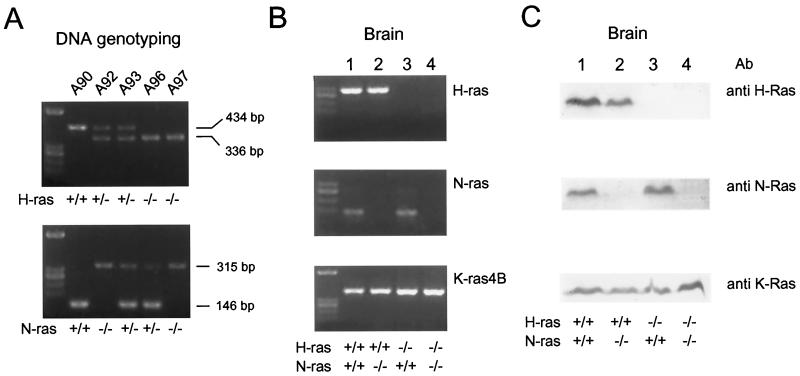FIG. 4.
Analysis of double mutant mice deficient for H-ras and/or N-ras. (A) Genotyping of representative animals resulting from crossing of H-ras- and N-ras-disrupted mice. Oligonucleotides used were as described in Materials and Methods: LM82, LM88, and LM89 were used for the H-ras gene, and LM164, LM205, and LM166 were used for the N-ras gene. Note that mouse A97 was deficient in both gene loci. (B) RT-PCR detection of expression of the different ras genes. Procedures were exactly as those used for Fig. 2. For K-ras, only K-ras4B expression is shown since the levels of K-ras4A were rather low in the brain and were similar for all four genotypes studied here (data not shown). (C) Western immunoblotting of H-Ras, N-Ras, and K-Ras proteins in double and single mutation mice. A 50-μg sample of total protein from brain was electrophoresed on SDS–14% polyacrylamide gels. The antibodies used were polyclonal anti-H-Ras and anti-N-Ras antibodies and monoclonal anti-K-Ras antibodies (recognizing both K-Ras4A and K-Ras4B proteins). (B and C) Representative examples showing only expression of RNA and protein from brain. Other tissues analyzed yielded similar results, with no increase in the expression of K-Ras in the double mutation mice compared with mice with single mutations of H-Ras or N-Ras or with wild-type mice.

